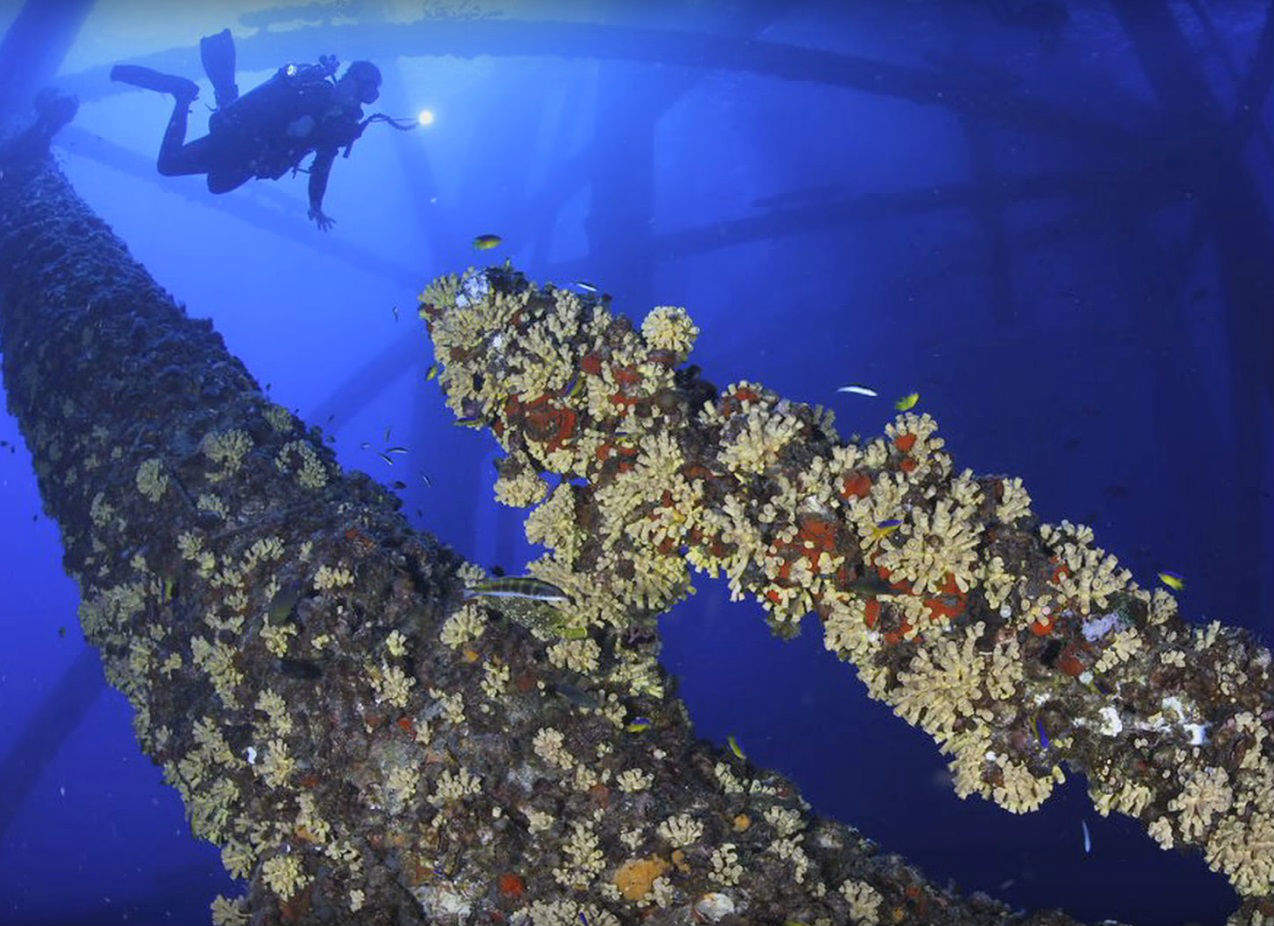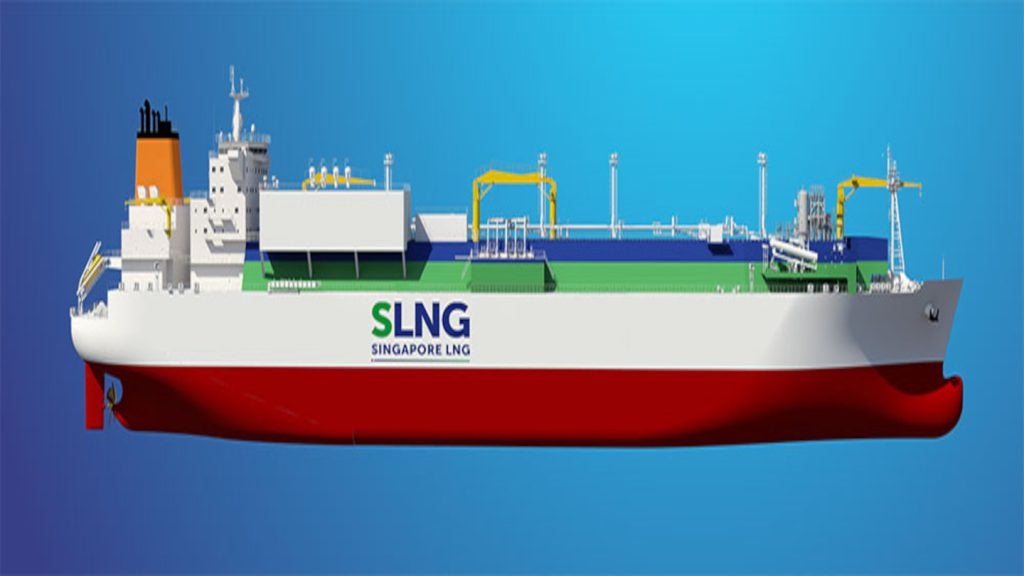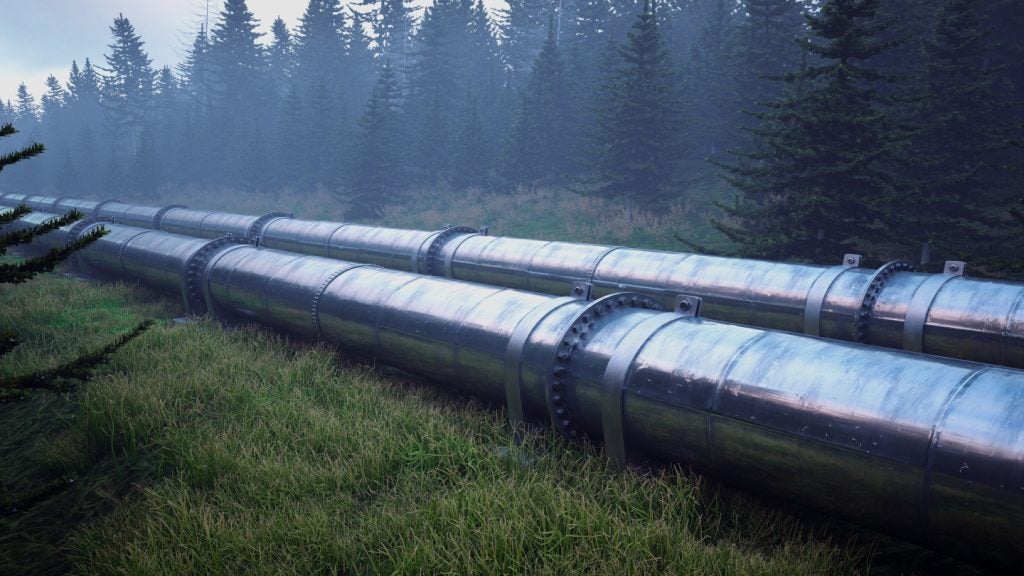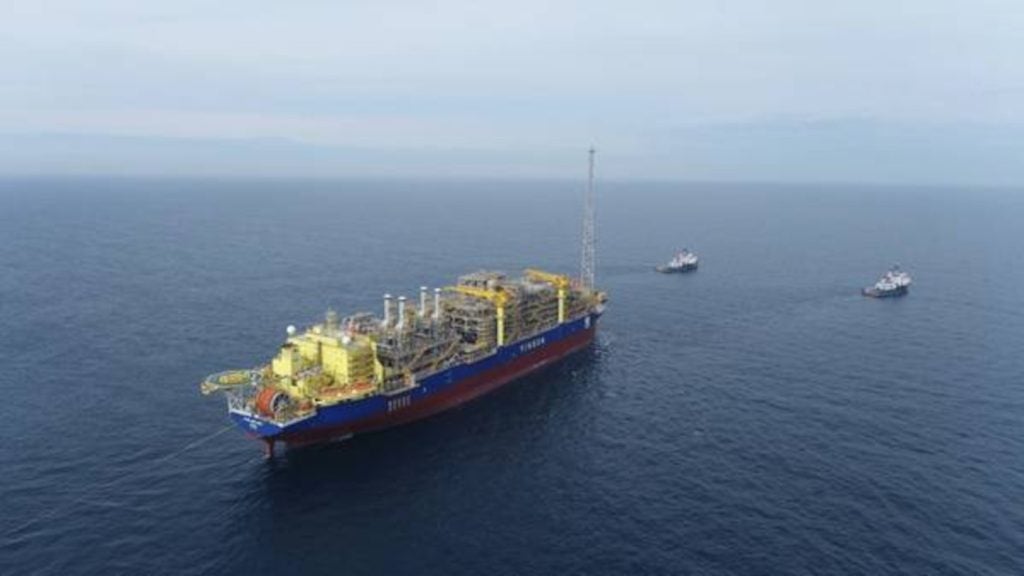

From a distance, the Eureka oil platform – located eight miles off the coast of California – looks like any regular rig. However, under the surface, a whole different world is flourishing in one of the most ecologically diverse ecosystems on Earth.
There are platforms in every ocean around the world that extract oil and gas reserves from the ground. But rather than being a drain on resources, these rigs are starting to give something back, producing habitats for fish, invertebrates and plants that researchers say are more productive than coral reefs and estuaries.
Rigs 2 Reefs: permanent homes for sea life
The Blue Latitudes organisation, founded in 2014 by marine conservation biologist Emily Callahan and oceanographer Amber Jackson, is trying to raise awareness of the value these rigs bring as permanent homes for sea life with the Rigs 2 Reefs programme.
"In California, we don’t have the best relationship with these platforms," says Callahan. "People here often think about the oil spills and the destruction to the environment that the oil platforms have caused instead of realising that there’s actually some benefit below the surface, and maybe an alternative use and another life for these platforms once they’ve stopped drilling."
To combat this, the Rigs 2 Reefs programme provides research and consulting services, as each platform has its own economic and environmental circumstances and a unique ecosystem surrounding it.
How well do you really know your competitors?
Access the most comprehensive Company Profiles on the market, powered by GlobalData. Save hours of research. Gain competitive edge.

Thank you!
Your download email will arrive shortly
Not ready to buy yet? Download a free sample
We are confident about the unique quality of our Company Profiles. However, we want you to make the most beneficial decision for your business, so we offer a free sample that you can download by submitting the below form
By GlobalDataCallahan and Jackson offer ways to communicate the important biology to everyday people – those who won’t necessarily pick up a scientific paper – so they can better understand the goals of the programme.
There are currently 27 oil rigs in California, few in comparison to the 500-600 rigs that Callahan saw in the Gulf of Mexico during her undergraduate days. People also generally have a better relationship with the oil and gas industry in Mexico, largely because the platforms offer numerous job opportunities.
"Every country will have its own cultural perspectives on the platforms, whether…they have a good relationship with oil or a poor relationship with oil," says Callahan. "That’s what makes implementing the programme so difficult."
In places such as the North Sea, which has hundreds of platforms, there are seven nearby countries, all of which have their own opinions on what should be done with the decommissioned platforms.
Worldwide homes for different species
Callahan says she first learned about converting reefing and the worth of old rigs when fishermen in the Gulf of Mexico used to regularly mention how good the fishing was around the platforms.
"At the time it seemed like a bit of an oxymoron," says Callahan. "They would always just rave about how good the fishing was on the platform."
Environmental factors also vary considerably between rigs. In California, the water is very cold, with many nutrients, and many of the rigs lie very deep in the sea. In comparison, the water in the Gulf of Mexico is extremely warm, conditions are tropical, and platforms tend to be very shallow.
Different ocean conditions provide homes for numerous different species. In California, the bocaccio rockfish is a commercially valuable fish, however it is a threatened species; its nearshore habitats and egg-laying places have been destroyed by runoffs, overfishing and pollution.
University of California Santa Barbara (UCSB) professor Dr Milton Love has been researching how these rockfish have been congregating on oil platforms off the coast of California.
During 30 years of research, Love has found that bocaccio rockfish are spawning, breeding and growing to maturity on shell mounds at the base of these platforms, which are assembled from the shells of dead scallops and mussels that fall from the rigs’ cross beams.
"Shells fall down at the end of their life cycle, and they create these big shell mounts at the base of the oil platform, which is a rocky reef habitat in which these commercially valuable rockfish can come and lay their eggs, have their nursery ground, and have a safe place away from runoff sourced pollution, away from fishing pressure, to restock and restore their fish population," Callahan says.

What do oil companies stand to gain?
As well as the ecological benefits, there is an economic advantage to reefing, as oil companies can save money using this natural process. If on average decommissioning a platform costs $1m, the equivalent cost of reefing it would be $500,000. From the remaining $500,000, half goes to the state for a marine preservation endowment fund that takes care of the liability associated with the platforms, insurance, and start-up costs for the programme, while the other half goes back to the oil company’s stakeholders.
"For states that rarely have enough money for marine conservation, it’s awesome," says Callahan.
Another benefit is the ability to repurpose existing structures, instead of having to completely remove it. To remove a platform, the rig needs to be brought on shore before it can be dismantled and recycled. In California, the infrastructure does not currently exist to properly recycle the structure.
"What [oil companies] would do is put [the platform] on a barge and send it across the Pacific to a third world country that has a shipbreaking yard or recycling facility," says Callahan. "The carbon footprint associated with that is humongous."
So, leaving structures partially or completely in place provides an opportunity to reduce a company’s carbon footprint, and the platform can be re-purposed for a beneficial use in the environment.
Environmentalist and engineering problems
Oil platforms, however, are fraught with problems, from environmental group opposition to engineering hazards.
"One of the biggest hazards would be that we don’t know how long these platforms are going to be standing for," Callahan explains. "A study done in the Gulf of Mexico that looked at the maintenance and integrity of the structures found that at around 300 years, the structure will require maintenance."
The Eureka platform, owned by Houston-based Beta Offshore, is one of California’s 27 offshore oil rigs. Since it was built 50 years ago, it has been responsible for several major oil spills, prompting environmental groups to fervently advocate complete removal of rigs.
Callahan says that there are plenty of people who wish to see the ocean just as it was before any building or manufacturing; just a clean sea bottom. It doesn’t matter that the rigs are home to sea creatures, because these opposition groups want the sea restored to how nature intended it to be. She believes resistance to reefing largely stems from a lack of public education about the Rigs 2 Reefs programme and its goals.
"Most people aren’t divers; most people don’t get the opportunity to see how life is colonising these beams because unfortunately what you see from the surface from your beach chair is a gigantic oil platform; you don’t see any of the life," she says. "What’s important is to be able to communicate that science and show that it this is one of the most productive ecosystems there is."
Unfortunately, when oil companies promote rigs to reefs programmes as a positive, it can be perceived by the public as ‘greenwashing’ – using environmentally-friendly propaganda for their own gain.
From California to the North Sea (and beyond)
The researchers at Rigs 2 Reefs hope to see the implementation of an international protocol for reef decommissioning in the near future. They have travelled to the North Sea, the Gulf of Mexico, and are planning an expedition to Malaysia, to work with overseas groups to gain a better understanding of the challenges that different countries face with their oil rigs.
"[We want to] develop a toolbox through which these counties can design and implement a successful rigs to reefs programme that benefits not only the oil company stakeholders, but also the…economy and ecology," Callahan says.
Neither Callahan nor Jackson promotes future drilling of oil and gas, and they make it clear that reefing is a solution to a problem, rather than a trend that should endorse further rig building. They are being creative with the resources and conditions they have, rather than advocating the addition of more platforms with future green plans as an afterthought.
"Our primary interest is that we’ve already created these platforms, the carbon footprint associated with removing them is huge, there isn’t really a great way to effectively recycle them that’s environmentally friendly, and they have been out there for 30-40 years," Callahan says. "They’ve already culminated a lot of life, so I think our biggest [focus] is that we’re advocating the re-purposing [of] these platforms in this way, and definitely not [advocating] future drilling."







